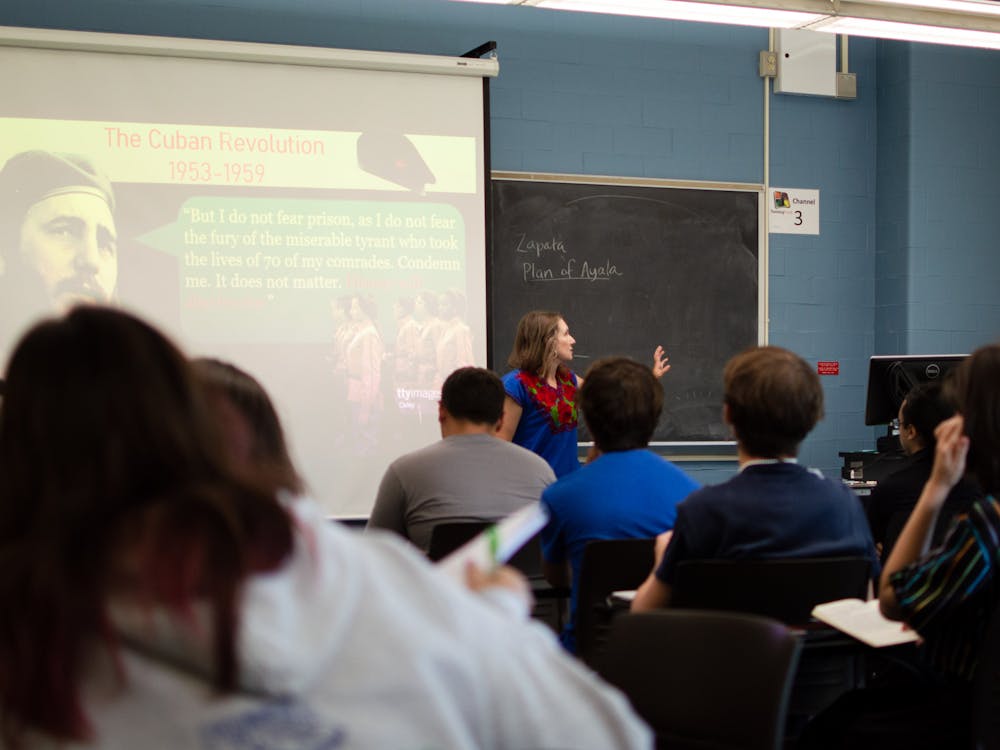The decision to pause surveillance testing was not made lightly.
The decision was made by a team that has been intensely involved in Miami University’s COVID-19 response since the beginning of the pandemic. This team includes expertise in epidemiology and public health, virology, immunology, healthcare, communications and student life, among other areas.
When deciding to pause surveillance testing, the team sought perspectives from diverse stakeholders outside our team, including university and student body leadership.
As a field, public health has an ethical and legal tight-rope to walk. When public health policy is burdensome and costly to community members, there has to be a strong case that the benefits of protecting public health outweigh those costs and burdens. When public health efforts continue despite burdens outweighing benefits, this is not only unethical, but it also betrays trust in public health as a field, potentially harming other public health efforts.
For surveillance testing, our team decided that the equation had shifted to burdens outweighing benefits, and it was therefore unethical to continue the program.
The goals of the surveillance testing program are twofold: first and foremost, as the editorial points out, is to surveil. It is critical that we are able to maintain an understanding of COVID-19 risk in our community, and surveillance testing can play an important role in this surveillance. However, our surveillance testing program is not our only means of surveillance.
The editorial points out that we are now relying solely on student self-report and diagnostic testing to track COVID-19 in our community. This is incorrect. This data is, and will continue to be, an important source of information, but it is only one piece of the surveillance picture.
We also monitor wastewater for the presence of SARS-CoV-2 across five residence hall regions on campus. Over the course of two semesters, we have analyzed our wastewater data in conjunction with our surveillance testing data. We have participated in wastewater testing meetings with a number of other universities across the state to discuss and learn best practices. Through this process, we have learned that wastewater monitoring consistently corroborates the information we gather from surveillance testing.
In addition to our campus wastewater, we monitor the state’s wastewater and case data for the city of Oxford. We accompany this information with what we know about infectious disease transmission, as well as information on vaccination status, immunity from previous
infections, current science and epidemiological modeling to gain a multi-faceted perspective on our community’s COVID-19 prevalence, risk and future course.
Over the course of the current semester, wastewater and surveillance testing have told the same story – we have consistently maintained very low levels of COVID-19 in our campus community.
Our surveillance positivity rates consistently ranged from 0% - 0.5%. Our last three wastewater sampling results have shown non-detectable levels of COVID-19 across all five campus regions. This is a first since we started monitoring wastewater last semester, providing evidence that we have the lowest amount of SARS-CoV-2 circulating in the monitored communities since the beginning of the pandemic.
At this point in time, with such consistently low prevalence of COVID-19, we feel very confident in our ability to surveil COVID-19 using the aforementioned sources of information. Surveillance testing at this point in time provides little to no added benefit to our ability to understand COVID-19 prevalence and risk in our community.
Enjoy what you're reading?
Signup for our newsletter
The second goal of surveillance testing is to reduce transmission. As noted, our estimated campus prevalence has been less than 0.5% the entire semester. Even if we were to test our entire campus population of over 20,000 individuals on a weekly basis, we would have little impact on reducing such low prevalence, due to re-introduction of the virus from outside sources. At our testing capacity of 2,000-3,000 students per week, we have little to no impact on community transmission at all.
There was a point in the semester when we went over two weeks without identifying a single positive case through surveillance testing. At this point in time, surveillance testing is having little to no benefit with regard to reducing transmission.
Now we have to consider the burdens of the testing program. When we test 2,000 students in a week, that is 2,000 individuals who have to change their planning for a day, make an appointment to get tested, take the time out of the day to get tested and manage stress and anxiety around the possibility of testing positive.
Running the surveillance program is extremely labor intensive for both Miami University and TriHealth employees. The program is also very expensive, and the University has an obligation to be fiscally responsible for our revenue sources including taxpayers, tuition payers and donors.
Our commitment to the safety and well-being of our community continues to be paramount. It is currently unethical to maintain a surveillance testing program because the costs and burdens clearly outweigh any benefits to our campus well-being. Our time and resources will be better spent on other aspects of community well-being. Should our collaborative, experienced, and highly knowledgeable team decide that surveillance testing needs to be reinstated, you can rest assured that the decision will be made with the same level of expertise and care for our community as our decision to pause the program.
From Philip Smith, Assistant Professor of Kinesiology, Nutrition and Health, and the COVID Response Team



